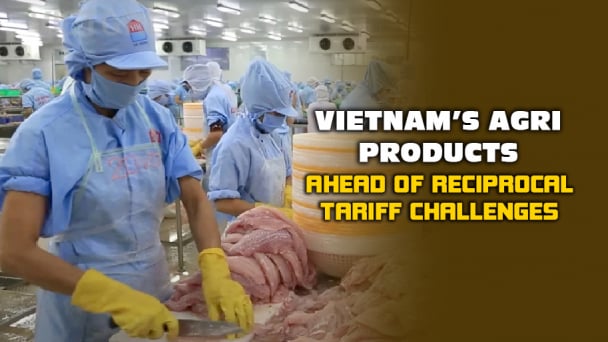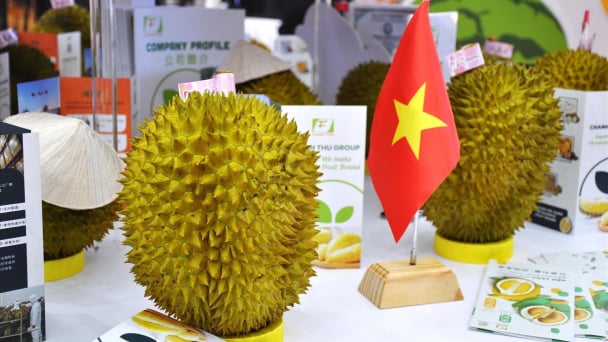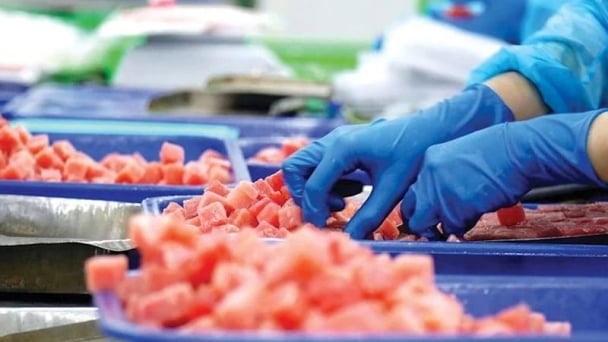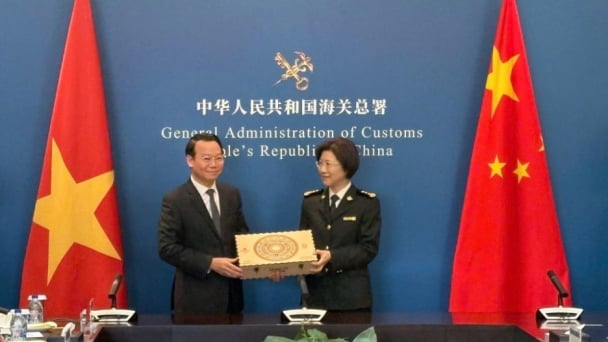June 1, 2025 | 06:53 GMT +7
June 1, 2025 | 06:53 GMT +7
Hotline: 0913.378.918
June 1, 2025 | 06:53 GMT +7
Hotline: 0913.378.918

Shrimp businesses are focusing on selling whole black tiger shrimp to China. Photo: Thanh Son.
Beginning in 2022, the robust revival of the Chinese market will be one of the brightest spots for shrimp exports. In 2021, shipments of Vietnamese shrimp to China decreased by 22 percent annually. In contrast, shrimp exports increased by 70 percent year-over-year in the first quarter of this year, hitting USD 109 million.
The sharp increase in Vietnamese shrimp exports to China is a result of the market's resurgence in demand for imported shrimp.
China is one of the world's largest consumers of shrimp, with extensive food service networks. In 2018, China's shrimp imports were just USD 1.4 billion, but by 2021, that number climbed to USD3.7 billion.
The quantity of shrimp imported into China is on the rise. China imported 611,000 tons of frozen warm-water shrimp in 2021, up 12 percent from 2020.
China's shrimp imports are anticipated to surge in 2022, as Chinese consumers invest more in imported shrimp. This has already been proved at the beginning of the year. In particular, during the first two months of the year, China's imports of frozen warm-water shrimp reached 114,000 tons, valued at USD 739 million, an increase of 26 percent in volume and 51 percent in value year-over-year.
Notably, shrimp imports to China soared in the first few months of this year, resulting in higher pricing. Specifically, in February, the price of Ecuadorian shrimp imported into China was recorded at USD 6.30 per kilogram, a 21 percent increase compared to February of the previous year. This revealed that shrimp consumption has rebounded significantly in this market.
The government's intention to boost the amount of imported seafood to 66 million tons in order to lessen the need for pork is also supporting the demand for shrimp imports into China this year.
However, this country continues to pursue the "Zero Covid" policy, thus it will damage Vietnam's exports of shrimp. However, the export of Vietnamese shrimp to China grew by 70 percent in the first quarter, demonstrating that Vietnamese shrimp firms have responded quickly to China's Covid-19 prevention efforts.
In addition, the fact that shrimp businesses have recognized the advantages and disadvantages of Vietnamese shrimp in competition in the markets in general and the Chinese market in particular is another reason for Vietnam's shrimp to gain a favorable reputation in order to establish a stronger foothold in the Chinese market.
According to Dr. Ho Quoc Luc, Chairman of the Board of Directors of Fimexvn, regarding the Chinese market, shrimp businesses are concentrating on selling large-sized whole black tiger shrimp and boiled raw shrimp, as this is a commodity that Chinese consumers love and the Vietnam shrimp industry has few competitors.
Businesses do not encourage the sale of IQF fresh shrimp to the United States since this is the strength of Ecuador and India and the product is extremely inexpensive. Instead, focus on boiling shrimp, fried shrimp, and other shrimp preparations, which are the industry's strengths in Vietnam owing to the world's most advanced processing technology.
On the EU market, processed shrimp products will be the competitive advantage of Vietnamese shrimp, however raw Vietnamese shrimp will struggle to compete with equivalent goods from Ecuador. Specifically for the Japanese market, firms will prioritize items requiring sophisticated processing and appealing designs.
Translated by Linh Linh
/2025/05/30/5010-5-173638_943.jpg)
(VAN) On May 29, at the GO! My Tho Trading Center, the Tien Giang Department of Industry and Trade, in collaboration with Central Retail Corporation, held the opening ceremony of the 3rd Fruit Festival 2025.

(VAN) Reciprocal tariffs are exerting pressure on U.S. exports, prompting Vietnamese firms to shift their focus to Muslim markets, Thailand, and Brazil.

(VAN) A free booth for two years at Xinfadi, Beijing's largest wholesale market, will be allocated to Vietnam's agricultural products.

(VAN) Vietnamese shrimp exporters are actively looking for alternative markets and accelerating shipments to the United States in response to the pressure of impending reciprocal tariffs. This is occurring during a temporary tariff suspension.

(VAN) The import-export turnover between Vietnam and Singapore rose amid a trade rebound, with machinery, electrical equipment, and fuels making up the majority of the transaction value.

(VAN) Director General of the General Administration of Customs of China, Ms. Sun Mai Jun, has pledged to implement measures that will ease the import process for Vietnamese agricultural products.

(VAN) Although Vietnam is still increasing its coffee exports, the industry is currently in the process of determining market strategies in response to the U.S. imposition of reciprocal tariffs.